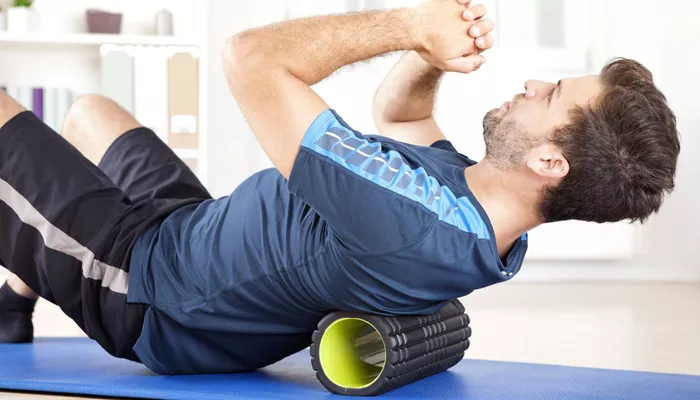Foam rolling is a technique used to release muscle tightness and improve flexibility. It involves using a foam roller to apply pressure to various parts of the body, helping to alleviate pain, increase blood circulation, and improve the range of motion. Many athletes and fitness enthusiasts use foam rolling as part of their warm-up or recovery routine. This article will dive deep into what foam rolling is, its benefits, and how to effectively use a foam roller.
What is Foam Rolling?
Foam rolling, also known as self-myofascial release (SMR), is a technique that involves rolling a foam cylinder over muscles to release tension. It helps break down adhesions or knots in muscle tissue that can cause discomfort and stiffness. Foam rollers come in various sizes, densities, and shapes, allowing users to target specific muscle groups for a more effective treatment.
Benefits of Foam Rolling
1. Improves Flexibility
Foam rolling can help increase flexibility by targeting the fascia—the connective tissue surrounding muscles. By applying pressure to tight areas, it can help improve the length and flexibility of muscles, making it easier to perform a variety of exercises.
2. Reduces Muscle Soreness
Many individuals incorporate foam rolling as part of their recovery routine. By massaging sore muscles, foam rolling helps to reduce delayed onset muscle soreness (DOMS). This makes it an essential tool for individuals following intense workouts, including cardio exercises.
3. Enhances Blood Circulation
Foam rolling helps improve blood flow to muscles, aiding in recovery and nutrient delivery. This is especially beneficial for athletes who engage in anaerobic training, as it helps reduce muscle stiffness and enhances performance in future workouts.
4. Reduces the Risk of Injury
By loosening tight muscles and improving flexibility, foam rolling can reduce the risk of injury. It prepares muscles for strenuous activities, helping athletes maintain a better range of motion and avoid strains or sprains.
5. Improves Posture
Foam rolling can help improve posture by relieving tension in the back, shoulders, and neck. Over time, regular use of a foam roller can help you maintain a more neutral spine position, reducing the risk of discomfort or pain associated with poor posture.
How to Foam Roll: Techniques and Tips
1. Choose the Right Foam Roller
Foam rollers come in different densities. Soft rollers are best for beginners, while firmer rollers provide a deeper massage. Select the right one based on your tolerance and needs.
2. Roll Slowly
When using a foam roller, move slowly over the targeted muscle area. Rolling too fast may reduce the effectiveness of the technique. Aim for about 1–2 minutes on each muscle group.
3. Focus on Tender Areas
If you encounter a tender spot or knot, pause and hold pressure on that area for 20–30 seconds to allow the muscle to release. This technique helps break up muscle adhesions.
4. Target Key Muscle Groups
Common areas for foam rolling include the calves, quadriceps, hamstrings, back, and glutes. These muscle groups tend to accumulate tension from both exercise and daily activity.
5. Incorporate Foam Rolling into Your Routine
For optimal results, include foam rolling in your warm-up and recovery routine. It complements both cardio workouts and anaerobic exercise by improving flexibility and reducing muscle soreness.
Is Foam Rolling Safe?
Foam rolling is generally considered safe when done correctly. However, it’s important to listen to your body. If you experience sharp pain or discomfort, stop immediately and consult with a healthcare professional. Avoid rolling over joints or bones and focus on soft tissues like muscles.
Frequently Asked Questions
1. How often should I foam roll?
Foam rolling can be done daily, but it’s important not to overdo it. Two to three times a week is sufficient for most people. Always listen to your body to avoid excessive soreness.
2. Can foam rolling replace stretching?
While foam rolling can improve flexibility, it does not replace traditional stretching exercises. A combination of foam rolling and static stretching is ideal for maintaining muscle health and flexibility.
3. Can foam rolling help with tight IT bands?
Yes, foam rolling can be particularly effective for relieving tension in the iliotibial (IT) band, which is a common source of tightness and discomfort for many people. Make sure to apply pressure slowly and gently over this area.
Conclusion
Foam rolling is a beneficial tool for improving flexibility, reducing muscle soreness, enhancing blood circulation, and preventing injury. Whether you’re engaging in anaerobic training or focusing on cardio exercises, foam rolling can be a game-changer for your fitness routine. By following proper techniques and regularly incorporating foam rolling into your workouts, you can experience improved muscle function and overall better recovery.

